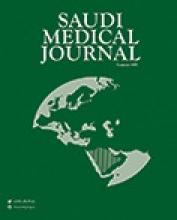Abstract
OBJECTIVE: The biological effect of electromagnetic field (EMF) emitted from mobile phones is a current debate and still a controversial issue. Therefore, little is known on the possible adverse effects on reproduction as mobile phone bio-effects are only a very recent concern. The aim of this experimental study was to determine the biological and morphological effects of 900 MHz radiofrequency (RF) EMF on rat testes.
METHODS: The study was performed in the Physiology and Histology Research Laboratories of Suleyman Demirel University, Faculty of Medicine, Isparta, Turkey in May 2004. Twenty adult male Sprague-Dawley rats weighing 270 - 320 gm were randomized into 2 groups of 10 animals: Group I (control group) was not exposed to EMF and Group II (EMF group) was exposed to 30 minutes per day, 5 days a week for 4 weeks to 900 MHz EMF. Testes tissues were submitted for histologic and morphologic examination. Testicular biopsy score count and the percentage of interstitial tissue to the entire testicular tissue were registered. Serum testosterone, plasma luteinizing hormone (LH) and follicle stimulating hormone (FSH) levels were assayed biochemically.
RESULTS: The weight of testes, testicular biopsy score count and the percentage of interstitial tissue to the entire testicular tissue were not significantly different in EMF group compared to the control group. However, the diameter of the seminiferous tubules and the mean height of the germinal epithelium were significantly decreased in EMF group (p<0.05). There was a significant decrease in serum total testosterone level in EMF group (p<0.05). Therefore, there was an insignificant decrease in plasma LH and FSH levels in EMF group compared to the control group (p>0.05).
CONCLUSION: The biological and morphological effects resulting from 900 MHz RF EMF exposure lends no support to suggestions of adverse effect on spermatogenesis, and on germinal epithelium. Therefore, testicular morphologic alterations may possibly be due to hormonal changes.
- Copyright: © Saudi Medical Journal
This is an open-access article distributed under the terms of the Creative Commons Attribution-Noncommercial-Share Alike 3.0 Unported, which permits unrestricted use, distribution, and reproduction in any medium, provided the original work is properly cited.






